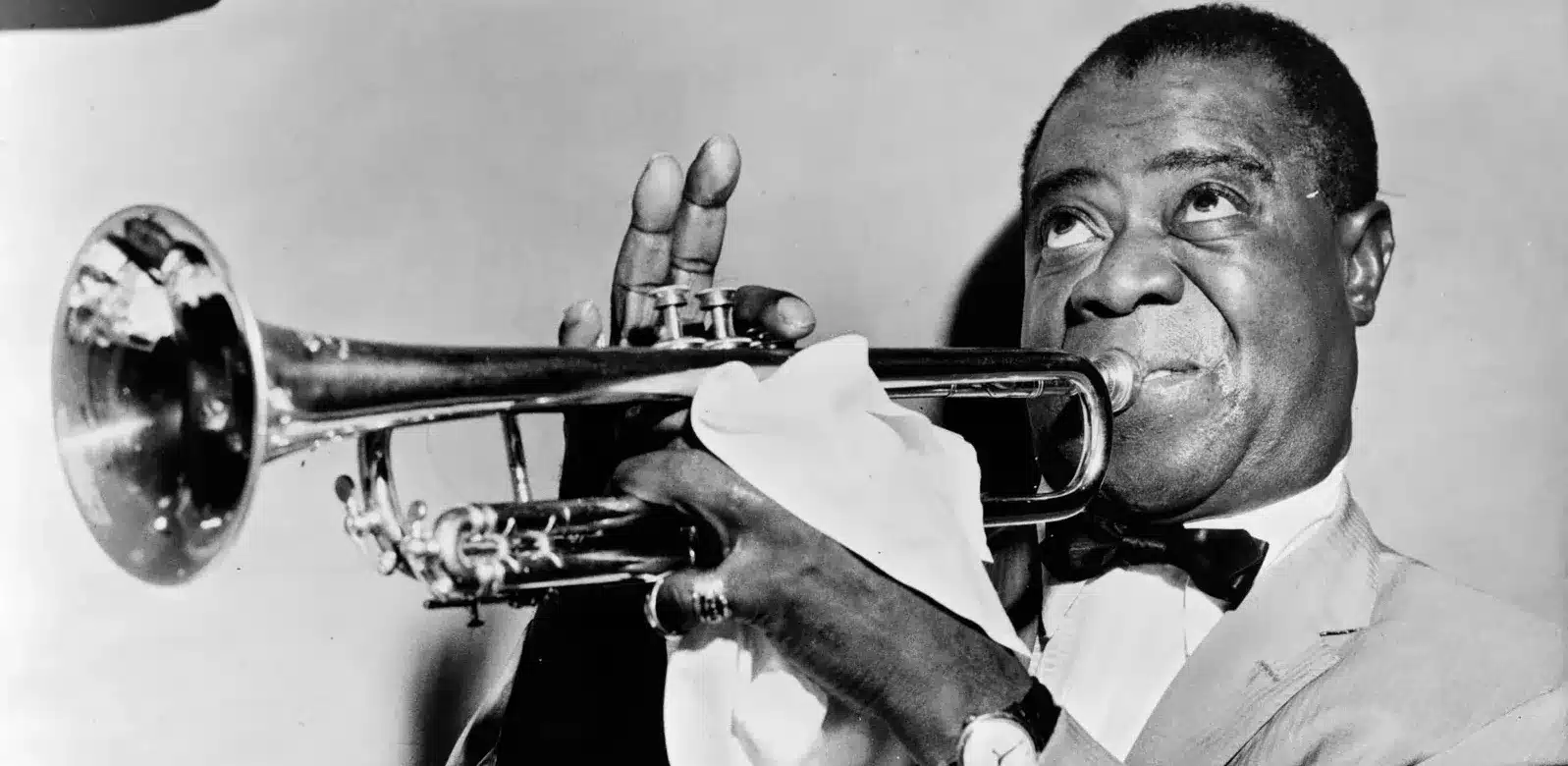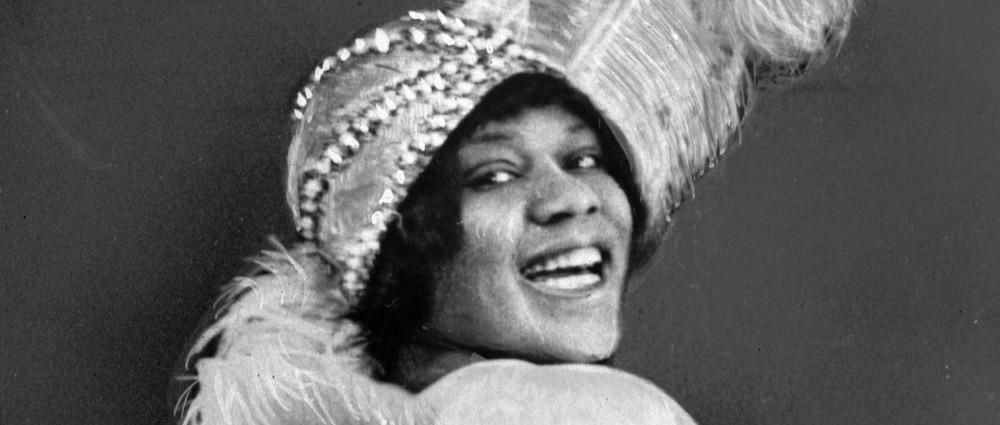The 1920s, often called the “Jazz Age,” was a significant period for jazz music, characterized by the emergence of influential artists who shaped the genre.
This decade saw the rise of Louis Armstrong, whose innovative trumpet solos and scat singing set new standards for jazz performance.
Duke Ellington brought a refined elegance to jazz with his orchestral compositions and arrangements.
At the same time, Bessie Smith’s powerful blues vocals captivated audiences and solidified her status as the “Empress of the Blues.”
Jelly Roll Morton, a pioneering pianist and composer, claimed to have invented jazz, and his work helped formalize the genre’s structure.
Meanwhile, Sidney Bechet’s virtuosic clarinet and soprano saxophone playing expanded the possibilities of jazz improvisation.
These artists, among others, not only defined the sound of the 1920s but also laid the foundation for the future of jazz.
This article highlights 20 influential jazz artists from the 1920s, showcasing their early careers, major hits, and lasting impact on music.
List of Jazz Artists in The 1920s
1. Louis Armstrong

Louis Armstrong, known as “Satchmo” or “Pops,” was a groundbreaking jazz trumpeter, singer, and bandleader.
He began his career in New Orleans before moving to Chicago, where he joined King Oliver’s Creole Jazz Band.
Armstrong’s virtuosic trumpet playing, innovative improvisation, and charismatic stage presence made him one of the most influential jazz musicians ever.
His recordings with the Hot Five and Seven, including “West End Blues” and “Potato Head Blues,” set new standards for jazz performance and improvisation.
- Famous songs: “West End Blues,” “Heebie Jeebies,” “Potato Head Blues”
- Awards: Grammy Lifetime Achievement Award, Rock and Roll Hall of Fame inductee
- Years Active: 1919–1971
2. Duke Ellington

Duke Ellington was a prolific composer, pianist, and bandleader who played a crucial role in the development of jazz during the 1920s.
His band, the Washingtonians, gained popularity at the Cotton Club in Harlem, where Ellington’s sophisticated arrangements and unique compositions set him apart.
Hits like “East St. Louis Toodle-Oo” and “Black and Tan Fantasy” showcased his ability to blend various musical influences into a cohesive jazz style.
Ellington’s work laid the foundation for big-band jazz and influenced countless musicians.
- Famous songs: “East St. Louis Toodle-Oo,” “Black and Tan Fantasy,” “Mood Indigo”
- Awards: 13 Grammy Awards, Pulitzer Prize Special Citation
- Years Active: 1914–1974
3. Bessie Smith

Bessie Smith, known as the “Empress of the Blues,” was one of the most popular and influential female blues singers of the 1920s.
Her powerful voice and emotional delivery captivated audiences, and her recordings for Columbia Records, such as “Downhearted Blues” and “St. Louis Blues,” sold millions of copies.
Smith’s ability to convey deep emotion through her singing made her a standout artist of the era.
Her contributions to blues and jazz music have left an enduring legacy.
- Famous songs: “Downhearted Blues,” “St. Louis Blues,” “Nobody Knows You When You’re Down and Out”
- Awards: Grammy Hall of Fame, Rock and Roll Hall of Fame inductee
- Years Active: 1912–1937
4. Jelly Roll Morton

Jelly Roll Morton, a pioneering jazz pianist, composer, and bandleader, was among the first to formalize the jazz genre.
Morton claimed to have invented jazz and contributed significantly to its development with his innovative compositions and arrangements.
His recordings with the Red Hot Peppers, including “Black Bottom Stomp” and “King Porter Stomp,” are considered early jazz classics.
Morton’s fusion of ragtime, blues, and jazz elements helped shape the sound of the 1920s.
- Famous songs: “Black Bottom Stomp,” “King Porter Stomp,” “Wolverine Blues”
- Awards: Grammy Hall of Fame, Rock and Roll Hall of Fame inductee
- Years Active: 1900–1941
5. Sidney Bechet

Sidney Bechet was a virtuoso clarinetist and saxophonist who played a crucial role in the development of jazz.
Known for his powerful and expressive playing, Bechet was one of the first musicians to use the soprano saxophone as a lead instrument in jazz.
His recordings, such as “Wild Cat Blues” and “Summertime,” showcased his technical prowess and emotional depth.
Bechet’s influence extended beyond the United States, as he also became a prominent figure in the European jazz scene.
- Famous songs: “Wild Cat Blues,” “Summertime,” “Petite Fleur”
- Awards: Grammy Hall of Fame, Rock and Roll Hall of Fame inductee
- Years Active: 1919–1959
6. Fletcher Henderson

Fletcher Henderson was a pioneering bandleader, arranger, and pianist who played a key role in developing big-band jazz.
His orchestra, which included future stars like Louis Armstrong and Coleman Hawkins, was one of the most influential bands of the 1920s.
Henderson’s innovative arrangements, such as “The Stampede” and “Copenhagen,” helped define the swing era and influenced many subsequent jazz musicians.
His work as an arranger for Benny Goodman further cemented his legacy in jazz history.
- Famous songs: “The Stampede,” “Copenhagen,” “Sugar Foot Stomp”
- Awards: Grammy Hall of Fame, DownBeat Hall of Fame inductee
- Years Active: 1921–1950
7. King Oliver

King Oliver, a cornet player and bandleader, was a significant figure in early jazz.
He led the Creole Jazz Band, one of the first New Orleans-style bands to gain national recognition.
Oliver’s innovative use of mutes and his ensemble’s recordings, including “Dipper Mouth Blues” and “Canal Street Blues,” were highly influential.
His mentorship of Louis Armstrong had a profound impact on the development of jazz, and his contributions to the genre are widely acknowledged.
- Famous songs: “Dipper Mouth Blues,” “Canal Street Blues,” “Chimes Blues”
- Awards: Grammy Hall of Fame, DownBeat Hall of Fame inductee
- Years Active: 1908–1938
8. Coleman Hawkins

Coleman Hawkins, known as “Hawk” or “Bean,” was a pioneering tenor saxophonist who played a crucial role in establishing the saxophone as a lead instrument in jazz.
His work with Fletcher Henderson’s orchestra and innovative solos, such as on “Stampede” and “One Hour,” showcased his technical prowess and improvisational skills.
Hawkins’ rich tone and creative approach to the saxophone influenced generations of jazz musicians and helped shape the genre’s sound in the 1920s and beyond.
- Famous songs: “Body and Soul,” “Stampede,” “One Hour”
- Awards: Grammy Hall of Fame, DownBeat Hall of Fame inductee
- Years Active: 1921–1969
9. Bix Beiderbecke

Bix Beiderbecke was a highly influential jazz cornetist, pianist, and composer known for his lyrical playing and innovative approach to jazz.
His recordings with the Wolverines, Frank Trumbauer, and Paul Whiteman’s orchestra, including “Singin’ the Blues” and “In a Mist,” are considered classics.
Beiderbecke’s cool, melodic style contrasted with the hotter jazz of his contemporaries and left a lasting impact on the development of jazz.
Despite his short life, his contributions to the genre are widely celebrated.
- Famous songs: “Singin’ the Blues,” “In a Mist,” “Clarinet Marmalade”
- Awards: Grammy Hall of Fame, DownBeat Hall of Fame inductee
- Years Active: 1923–1931
10. Earl Hines

Earl Hines, known as “Fatha,” was a pioneering jazz pianist and bandleader whose innovative approach to the piano had a profound impact on the development of jazz.
His unique “trumpet style” of piano playing, characterized by rhythmic and melodic improvisation, influenced countless musicians.
Hines’ recordings with Louis Armstrong, including “Weather Bird” and “West End Blues,” are considered landmarks in jazz history.
His long career and contributions to the genre have earned him recognition as one of the greatest jazz pianists ever.
- Famous songs: “Weather Bird,” “West End Blues,” “Rosetta”
- Awards: Grammy Lifetime Achievement Award, DownBeat Hall of Fame inductee
- Years Active: 1918–1983
11. Ma Rainey

Ma Rainey, known as the “Mother of the Blues,” was a pioneering blues singer whose powerful voice and dynamic performances captivated audiences in the 1920s.
Her recordings, such as “See See Rider” and “Bo-Weavil Blues,” showcased her ability to convey deep emotion and storytelling through music.
Rainey’s influence on the development of blues and jazz is significant, and she paved the way for future generations of female blues singers.
Her contributions to music have earned her lasting recognition and respect.
- Famous songs: “See See Rider,” “Bo-Weavil Blues,” “Prove It on Me Blues”
- Awards: Grammy Hall of Fame, Rock and Roll Hall of Fame inductee
- Years Active: 1900–1939
12. Johnny Dodds

Johnny Dodds was a highly regarded jazz clarinetist known for his expressive playing and technical skill.
He was a key figure in the Chicago jazz scene of the 1920s and played with prominent bands, including King Oliver’s Creole Jazz Band and Louis Armstrong’s Hot Five and Hot Seven.
Dodds’ recordings, such as “Wild Man Blues” and “Hotter Than That,” are considered early jazz classics.
His ability to convey emotion through his clarinet playing made him one of the most respected musicians of his time.
- Famous songs: “Wild Man Blues,” “Hotter Than That,” “Perdido Street Blues”
- Awards: Grammy Hall of Fame, DownBeat Hall of Fame inductee
- Years Active: 1918–1940
13. James P. Johnson

James P. Johnson, known as the “Father of Stride Piano,” was a pioneering jazz pianist and composer whose innovative playing style profoundly impacted jazz and popular music.
His compositions, such as “The Charleston” and “Carolina Shout,” helped define the stride piano genre and influenced many subsequent pianists.
Johnson’s ability to blend ragtime, blues, and jazz elements into a cohesive and exciting style made him a key figure in the development of jazz piano.
- Famous songs: “The Charleston,” “Carolina Shout,” “Snowy Morning Blues”
- Awards: Grammy Hall of Fame, DownBeat Hall of Fame inductee
- Years Active: 1913–1955
14. Fats Waller

Fats Waller was a renowned jazz pianist, composer, and entertainer known for his virtuosic playing and humorous performances.
His compositions, such as “Ain’t Misbehavin'” and “Honeysuckle Rose,” became jazz standards and showcased his ability to blend technical skill with infectious humor.
Waller’s recordings and live performances captivated audiences and left a lasting impact on the jazz genre.
His contributions to music have earned him recognition as one of the greatest jazz pianists and composers of all time.
- Famous songs: “Ain’t Misbehavin’,” “Honeysuckle Rose,” “Keepin’ Out of Mischief Now”
- Awards: Grammy Hall of Fame, Rock and Roll Hall of Fame inductee
- Years Active: 1918–1943
15. Kid Ory

Kid Ory was a pioneering jazz trombonist and bandleader known for his powerful playing and innovative contributions to early jazz.
He was a key figure in the New Orleans jazz scene and played with notable musicians, including Louis Armstrong and King Oliver.
Ory’s compositions, such as “Muskrat Ramble” and “Savoy Blues,” became jazz standards and showcased his ability to blend rhythmic drive with melodic invention.
His influence on the development of jazz trombone playing is significant, and his contributions to the genre are widely recognized.
- Famous songs: “Muskrat Ramble,” “Savoy Blues,” “Ory’s Creole Trombone”
- Awards: Grammy Hall of Fame, DownBeat Hall of Fame inductee
- Years Active: 1910–1966
16. Bubber Miley

Bubber Miley was a pioneering jazz trumpeter known for his distinctive use of the plunger mute and his ability to create a “wa-wa” sound.
He was a key member of Duke Ellington’s orchestra in the 1920s and contributed to developing the “jungle” style of jazz.
Miley’s recordings, such as “East St. Louis Toodle-Oo” and “Black and Tan Fantasy,” showcased his innovative approach to trumpet playing.
His influence on jazz trumpet and his contributions to Ellington’s early success are significant.
- Famous songs: “East St. Louis Toodle-Oo,” “Black and Tan Fantasy,” “Creole Love Call”
- Awards: Grammy Hall of Fame, DownBeat Hall of Fame inductee
- Years Active: 1920–1932
17. Clarence Williams

Clarence Williams was a multifaceted jazz musician, composer, and producer who played a crucial role in developing early jazz.
He was a talented pianist and vocalist known for his work as a bandleader and composer.
Williams’ recordings, such as “Royal Garden Blues” and “Wild Cat Blues,” showcased his ability to blend various musical styles into a cohesive and exciting sound.
His contributions to jazz as a performer and promoter of other artists have left a lasting legacy.
- Famous songs: “Royal Garden Blues,” “Wild Cat Blues,” “Sugar Blues”
- Awards: Grammy Hall of Fame, Rock and Roll Hall of Fame inductee
- Years Active: 1915–1965
18. Paul Whiteman

Paul Whiteman, known as the “King of Jazz,” was a bandleader and composer who significantly popularized jazz during the 1920s.
His orchestra was known for its sophisticated arrangements and crossover appeal, blending jazz with classical music elements.
Whiteman’s recordings, such as “Whispering” and “Rhapsody in Blue,” helped bring jazz to mainstream audiences.
While his style was more refined and less improvisational than other jazz musicians of the time, his contributions to the popularization of jazz are noteworthy.
- Famous songs: “Whispering,” “Rhapsody in Blue,” “Mississippi Mud”
- Awards: Grammy Hall of Fame, DownBeat Hall of Fame inductee
- Years Active: 1916–1963
19. Red Nichols

Red Nichols was a prominent jazz cornetist and bandleader known for his technical skill and innovative approach to jazz.
He led the group Red Nichols and His Five Pennies, which featured talented musicians and produced numerous recordings in the 1920s.
Nichols’ ability to blend melodic invention with rhythmic drive made his recordings, such as “Ida, Sweet as Apple Cider” and “Japanese Sandman,” highly influential.
His contributions to the development of jazz cornet playing and his impact on the genre are widely recognized.
- Famous songs: “Ida, Sweet as Apple Cider,” “Japanese Sandman,” “Indiana”
- Awards: Grammy Hall of Fame, DownBeat Hall of Fame inductee
- Years Active: 1921–1965
20. Miff Mole

Miff Mole was a pioneering jazz trombonist known for his technical proficiency and innovative approach to trombone playing.
He was a key figure in the development of the instrument in jazz and played with notable musicians, including Red Nichols and Paul Whiteman.
Mole’s recordings, such as “Miff Mole and His Little Molers,” showcased his ability to blend intricate melodic lines with rhythmic drive.
His influence on jazz trombone playing is significant, and his contributions to the genre are widely recognized.
- Famous songs: “Miff Mole and His Little Molers,” “Shim-Me-Sha-Wabble,” “Slippin’ Around”
- Awards: Grammy Hall of Fame, DownBeat Hall of Fame inductee
- Years Active: 1920–1953
Final Thoughts
The 1920s were a groundbreaking decade for jazz, thanks to the remarkable contributions of these 20 artists.
Their innovative approaches, whether through Louis Armstrong’s pioneering trumpet solos, Duke Ellington’s sophisticated compositions, or Bessie Smith’s powerful blues vocals, set new standards in music.
These artists defined the sound of their era and laid the foundation for future generations, influencing countless musicians across genres.
Their legacies continue to shape jazz music today, highlighting the timeless quality of their work.
As we reflect on their contributions, it’s clear that their influence extends far beyond their lifetimes, maintaining a presence in the cultural and musical landscape.
The spirit of the Jazz Age lives on through their recordings, performances, and the inspiration they provide to artists and listeners worldwide.





















